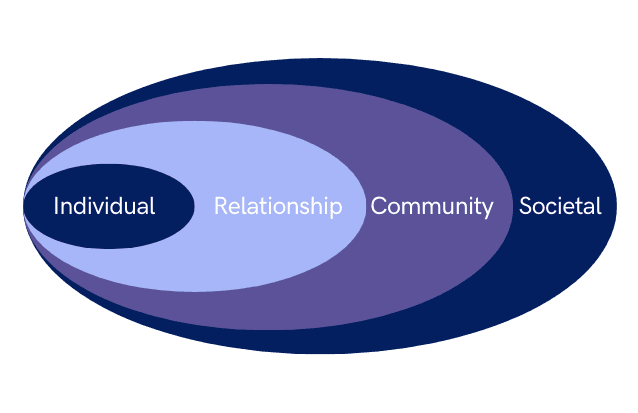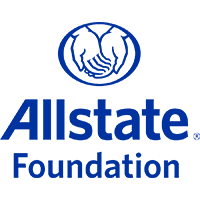Intimate partner violence is, indeed, preventable. That is the vision and the purpose of NYSCADV's Primary Prevention Project - to identify and promote strategies that can stop violence before it starts. Our efforts began with our participation on the DELTA Project, a national prevention project that supports efforts to design, implement and evaluate strategies that stop intimate partner violence from occurring in the first place. NYSCADV was a participant from the project’s inception in 2002 until 2012, and today continues to prioritize primary prevention as a means toward changing the social norms that allow intimate partner violence to thrive.
WHAT IS PRIMARY PREVENTION?
Three Levels of Prevention
- Primary – Approaches that take place before domestic violence has occurred to prevent first time victimization or perpetration (before)
- Secondary – To intervene, respond and/or prevent violence from happening again and deal with short-term consequences (after, intermediate) -i.e. arrest, emergency shelter, medical attention
- Tertiary – To provide ongoing support to victims and ongoing accountability to abusers (after, long term) – i.e. Support Group and Batterer Accountability Programs through Probation.
Primary prevention is on a continuum with intervention (secondary or tertiary prevention). Primary prevention activities can be designed to compliment intervention strategies that are already in place in a community.
Models, Tools, & Approaches
The Public Health Model offers a four step approach for developing primary prevention strategies:
- Define problem or need
- Identify risk and protective factors
- Develop and evaluate prevention strategies
- Disseminate promising strategies
Social Ecological Model
Individual behavior development, change, and maintenance are influenced by each level of the social ecology. The four levels of the social ecology are: individual, relationship, community and society. (An organizational level can also be included and can be found in other versions of this nested model.)
Accordingly, each level of the social ecological model can be thought of as an avenue through which individual behavior development, change, and maintenance can be promoted. To prevent IPV from initially occurring, each level of the social ecology offers opportunities to develop and maintain individual behavior associated with non-violence and change behaviors associated with violence. When you are developing prevention strategies across the four levels of the social ecology, the key is to note which avenue you are using to influence individual behavior.
Each level is connected and reinforces the others, while representing separate, but complementary avenues through which to prevent domestic violence.

NYSCADV Prevention Toolkit
The NYSCADV Prevention Toolkit contains exercises, activities, primers, information and resources designed to help individuals and groups to think about what would prevent domestic violence from happening in their communities. Tools and resources are chosen carefully, based on lessons learned from the New York State DELTA Project and successes from local domestic violence programs throughout the state and across the country.
Annual Primary Prevention Summit
Intimate partner violence is, indeed, preventable. That is the vision and the purpose of NYSCADV's Primary Prevention Project - to identify and promote strategies that can stop violence before it starts. As part of this project NYSCADV annually hosts a Primary Prevention Summit, since 2015. Presentations and discussions led by national and state-level experts include: strategies for effective social marketing campaigns, as well as working with college campuses, schools, and workplaces.
NYSCADV State Prevention Plan
Strategic Directions for the Prevention of Intimate Partner Violence in New York State is the result of the Consortium’s planning process and was originally published in 2010. This is an updated version that reflects current data and knowledge gained throughout the process of implementing the plan.
NYSCADV Primary Prevention Listserv
NYSCADV's Prevention Listserv is a space to support the work of advocates working in the field of domestic violence primary prevention. It is intended as a forum to discuss and share ideas, experiences, and resources related to domestic violence primary prevention.
NYSCADV PREVENTION BOOKLET
“If violence is learned it can be unlearned.”
— Transforming Communities



